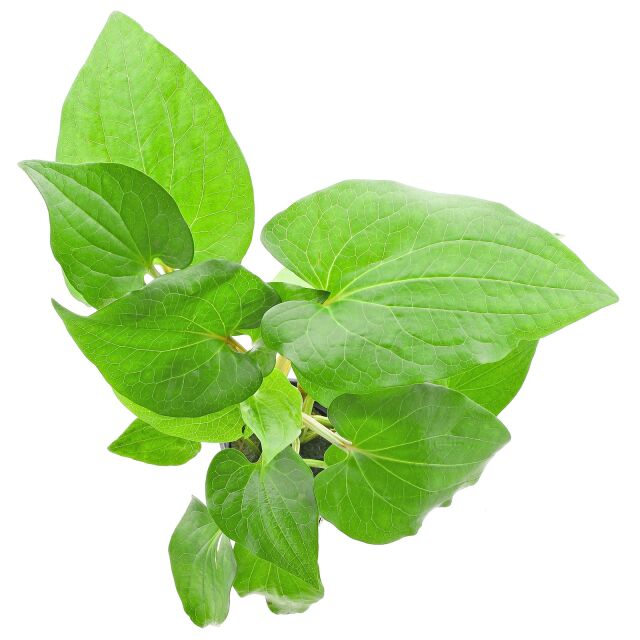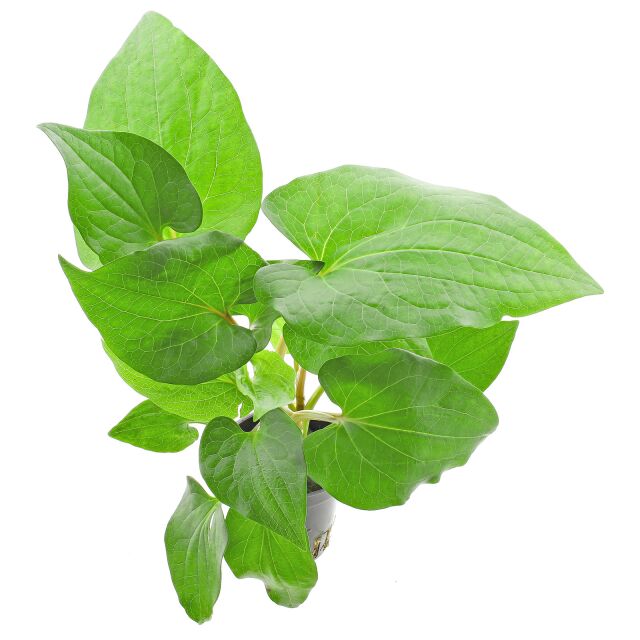Lizard's tail



Saururus cernuus
Lizard's tail
- Special growth habit
- Well suitable for creation of "plant streets"
- Also for cold water tanks and paludaria
Item question
We’re here for you!
Please enter your question and e-mail and we’ll contact you as soon as possible. It usually takes us up to 24 hours during business days to respond.
Thank you for your question!
Thank you, we’ll get in touch!
Close window
You already sent us a question.
Please wait a few minutes
Description
The Lizard's tail comes from North America where it grows rampantly with its underground runners in swamps and watersides. Its qualities as an aquarium plants were detected in the Netherlands; as submerged plant it grows much more modest and stays smaller than in its terrestrial form. The upright stems bear heart-shaped, horizontally arranged, medium green leaves. As a classical plant in the Dutch planted aquarium style, it is also known as the "Leiden plant" for many years.
Saururus cernuus is not very demanding but should be well lit and benefits from a nutrient-rich substrate. The temperatures should not exceed 25 °C for a longer time; on the other hand, this plant is quite cold-resistant. It is propagated by stem cuttings. As emersed plant, S. cernuus is vigorous, propagating by undergrund runners.
Traditionally, the "Leiden plant" is used for the creation of "plant streets" in Dutch style tanks. Shoots with graduated length are planted in a group. Beyond that, Saururus cernuus is generally interesting as an accent plant in the midground, for example combined with low ground covers.
Saururus cernuus, also known as lizard's tail, inhabits the east and southeast of the USA, where it grows in the shallow water zones of ditches, ponds, bogs and rivulets. In nature it is only rarely found to grow totally submersed.
This herbaceous bog plant has long been used in Dutch-style tanks and it is readily available in trade - give that you know where to look for it, as it is often sold as a pond plant.
S. cernuus is easy to cultivate and has only moderate requirements that have to be fulfilled for it in order to grow well. Light should be intensive, and the plant needs a constant CO2 supply for maximum growth and large leaves. The addition of nitrate, phosphate and micronutrients with a liquid fertiliser furthers its overall health and vitality, even though it is robust enough to exist without fertilisation. (read more)
| Complete botanical name | Saurúrus cérnuus L. |
| Family | Saururaceae |
| Genus | Saururus |
| Difficulty | medium |
| Usage | Semi-emersed plant for open tanks, Midground, Foreground, group |
| Growth | slow |
| pH value | 6 - 8 |
| Temperature tolerance | 4 - 27°C |
| Carbonate hardness | 5 - 15°dKH |
| General hardness | 0 - 30°dGH |
| Propagation | Runners, Cuttings |
| Can grow emersed? | yes |
| Source | Flowgrow |
| Complete botanical name |
| Saurúrus cérnuus L. |
| Family |
| Saururaceae |
| Genus |
| Saururus |
| Difficulty |
| medium |
| Usage |
| Semi-emersed plant for open tanks, Midground, Foreground, group |
| Growth |
| slow |
| pH value |
| 6 - 8 |
| Temperature tolerance |
| 4 - 27°C |
| Carbonate hardness |
| 5 - 15°dKH |
| General hardness |
| 0 - 30°dGH |
| Propagation |
| Runners, Cuttings |
| Can grow emersed? |
| yes |
| Source |
| Flowgrow |
General information
Please choose a variant to see more information.
| Item no. |
|
| EAN | |
| Weight | |
| Shipping weight |
Customers ask customers
You have questions about this product? Ask other customer or our support team about this product!